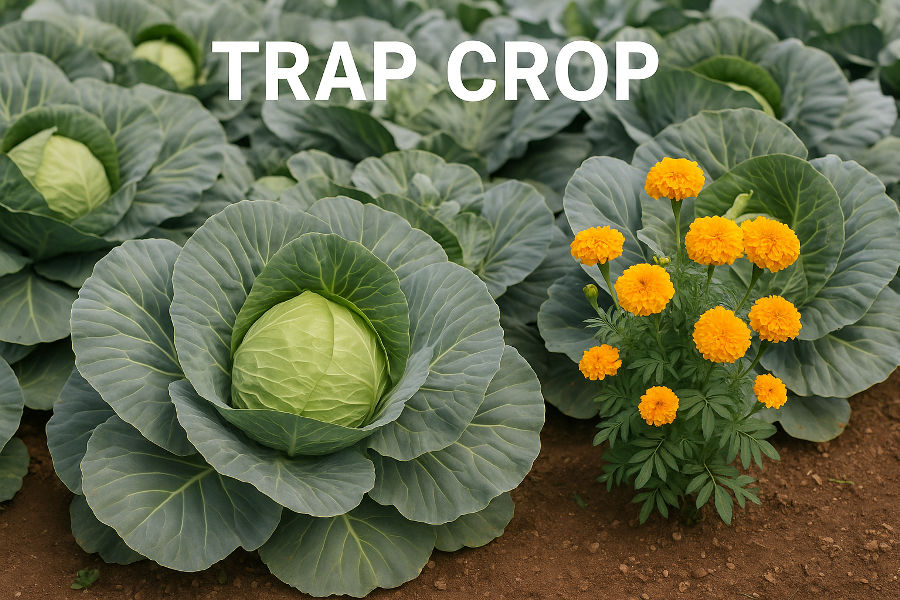What is a Trap Crop?
A trap crop is a plant grown specifically to attract pests away from a main crop. It acts as a decoy, luring harmful insects to itself and thereby protecting the economically important crop from damage.
How does it work?
Pests are naturally more attracted to certain plants. By planting these attractive species near or around the main crop, farmers can redirect pests and manage them more effectively. The trap crop can then be treated separately or removed, reducing overall pest pressure.
Examples of trap crops:
Okra for cotton (controls bollworms)
-
Marigold for tomato (controls nematodes)
-
Maize for brinjal (controls shoot and fruit borers)
-
Sunflower for banana (controls aphids and thrips)
Benefits of trap cropping:
-
Minimizes pest damage to main crops
-
Reduces pesticide use
-
Supports natural farming practices
-
Cost-effective pest management
